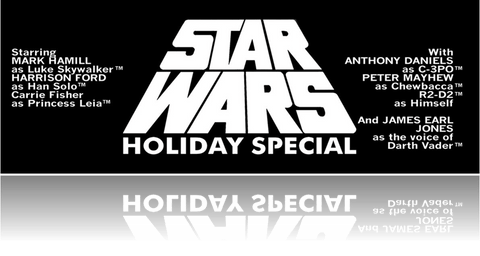
I grew up in quite an unusual town, nestled on the western edge of the urban sprawl of Birmingham but far enough away to be in the middle of rolling countryside. With the River Severn, funfairs, arcades, lots of pubs and 'fish and chip' shops, it is almost a British sea-side holiday town, nestled in the middle of a land-locked county.
It also, apparently, had the oldest cinema in Britain. Opened as “The Electric Theatre” on 22nd February 1913, “The Haven” finally closed its doors on carnival day, August 1976.
The photo below, taken from an “ATV Today” television broadcast (“ATV Today. 05.08.1976. Closure of Britain's oldest cinema – Stourport”) shows the outside of the cinema, just before its closure.

It had probably changed very little from the 1910s. We can see posters for the latest presentation, Bruce Lee’s “Fists of Fury”. This was originally released in Hong Kong as “The Big Boss” and, if you look closely, you can see that posters for both of the film’s titles are on show!
You can also see, below the nearest and furthest posters, some smaller photos, set in little recesses. These are Lobby / Front of House Cards.
What are Lobby Cards?
As the name suggests, Lobby Cards (as they are called in the U.S.) or Front of House Cards (as they are known in the U.K.), were designed for display in the customer-facing areas of a cinema / movie theatre.
Whilst the first movie ‘trailer’ had been produced in around 1914, they did not become common-place until the 1930s. Prior to that, studios needed a way of selling the key points of a new film to a potential audience.
Sources give differing dates for the first use of Lobby Cards, ranging from 1908 and 1913 to 1914. It is clear however, that by around 1916, the Lobby Card was becoming a staple of the movie advertising machine.
Printed on a thicker ‘card stock’ than larger movie posters, they were originally produced in black and white. This quickly progressed through rotogravure and hand-tinting, to bold, colourful, eye-catching designs intended to ensnare potential customers.
Produced in sets that ranged from 4, 8 (the most common number), 12, 16 or even 20 cards, each set typically contained a ‘Title Card’ and then a number of ‘Scene Cards’ showcasing a significant scene or movie star from the film. Strung together, the set provided an enticing preview of the movie.
The use of Lobby Cards peaked between the 1940s and 1960s and then gradually declined. From the 1990s, only a small number of films have included them in their publicity kits. The most recent examples we have come across are “The Adventures of Tintin” (2011), “The Amazing Spider Man” (2012) and “Blade Runner 2049” (2017).
An Example Set of Lobby Cards
In order to provide a view of what a good Lobby Card set should look like, we have chosen a set from Stanley Kubrick’s 1980 horror classic, “The Shining”, based on the novel by Stephen King.
The set comprises (unusually) nine, 8 in x 10 in cards and so is a 'mini lobby' set, in this case from the U.K.
The Title Card takes the design of the film’s one-sheet movie poster, by the legendary Saul Bass.

The eight ‘Scene Cards’ lead us through some of the key moments of the movie, including the iconic “Here’s Johnny” moment and Shelley Duvall terrified, holding a butcher’s knife.

Given the film’s nature and the studio’s desire (perhaps need) to keep some of its most thrilling moments under wraps, the cards do a fantastic job of showing Jack Torrance’s craziness, the potential danger to his son and the terror of his wife.
Lobby card collectors use the term "a Dead Card" to describe a card that adds little to your understanding of the film. I would argue that there isn't a dead card in this set. They all do what lobby cards should.
Lobby Card Formats
As we have in previous blog posts looking at poster types and sizes, here is a useful table summarising the Lobby Card sizes you are most likely to come across.

At its best, a Lobby Card provides the essential essence of a film in a single image. Within our collections we have some stunning examples, such as Superman (1978), Rocky (1977) and 2001: A Space Odyssey (1968). These three cards (also shown at the top of this blog post) perfectly sum up their film in a single frame.
Lobby Cards are also highly collectible. Some collectors prefer sets, others just the holy-grail single image from a film. Given their size, they are very easy to store, and very easy to display. Either on their own, or as part of a cluster wall, they add a fantastic piece of vintage culture to any stylish home.
Do take a look. We hope you find something you love.
Adam and the Art of the Movie Team
P.S. If you are interesting in learning more about the early days of lobby cards, we recommend “Foyer Pleasure: The Golden Age of Cinema Lobby Cards” by John Kobal and V.A. Wilson. Together with its informative text, it showcases a great collection of cards from 1922 to 1955. A really super book.





I just bought my first one at an estate sale.
From a play called Collete, wasn’t familiar with it but I loved the illustration.
A pleasure Ena – the world of movie posters is a weird and wonderful one! :-)
I only just learned about lobby cards today, while digging around the Smithsonian Open Access database. Thanks so much for this new knowledge!
Hi there. Just a quick word to say thanks for this superb description and introduction to Lobby Cards! I run a fledgling, but growing page and community dedicated to Lobby Cards (and collecting them!) over on Facebook. See here for the Page: https://www.facebook.com/LobbyCardsGallery (there’s a private Group “Lobby Card Collectors” too – all fellow collectors and dealers welcome!). All the best, ~John.